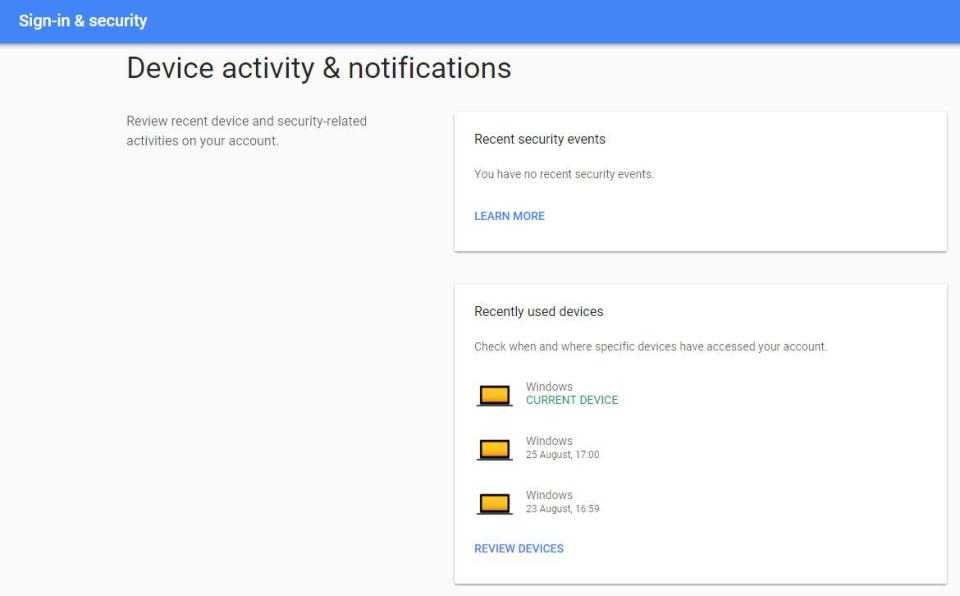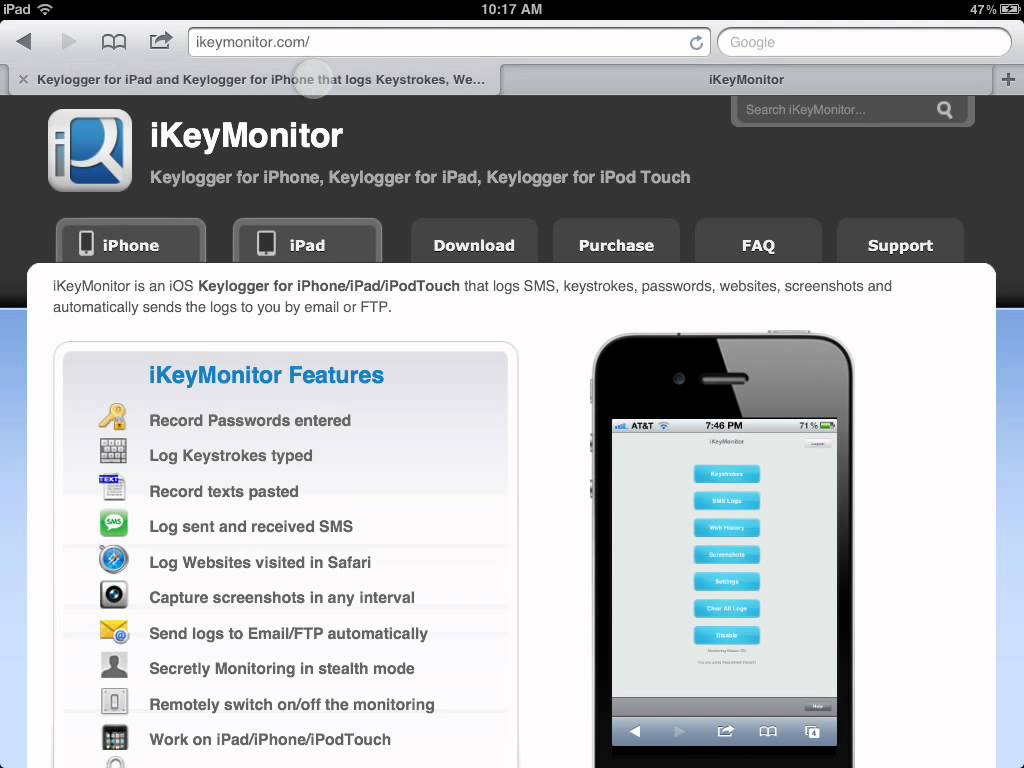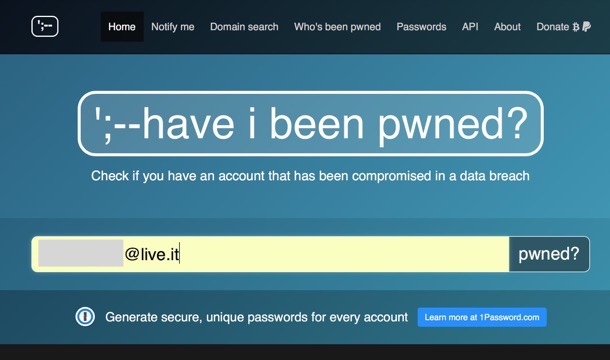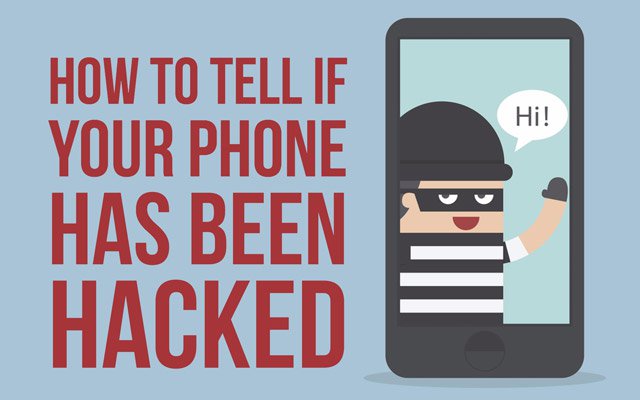How to Tell if Someone is Spying on You – Detect Email Monitoring.
Your “sixth sense” tells you that someone is spying on emails you send to family, friends, and work colleagues. Since you have this “worm” in your head, you can not sleep anymore. Tell me, would you like to take away this doubt and eventually run for cover to avoid being spied on by cybercriminals? If you answered affirmatively, know that you have come to the right place at the right time!
In the following paragraphs, in fact, I can show you how to understand if someone spies on us by e-mail adopting some simple precautions that can finally take away the doubts that so much haunt you. And if I should unfortunately find out that I am actually spied on, I will tell you what you can do to remedy the situation and, above all, how to prevent this unfortunate event from happening again in the future.
So, you’re already at the “places” of command, ready to start? Yup? Great! Make yourself comfortable, take all the time you need to concentrate on reading the next paragraphs and, more importantly, implement the “tips” that I will give you. Good luck for everything!
Index – How to Tell if Someone is Spying on You – Detect Email Monitoring
Understanding if someone spies on us e-mails
Check the latest activities of your account
Check for spy software on your devices
Check to see if your provider has suffered known attacks
What to do if someone tells us about the e-mails
Understanding if someone spies on us e-mails

How to Tell if Someone is Spying on You – Detect Email Monitoring.
There are various measures that can help you understand if someone is spying on emails. In this case, you can check the last activities of your account, check for the presence of spy software on your devices and check if your provider has suffered cyber attacks in the last period.
Check the latest activities of your account

How to Tell if Someone is Spying on You – Detect Email Monitoring.
Checking the last activity of your account is a great way to find out if anyone has made unauthorized access to your inbox. How? I’ll give you an example, so you get immediately to the point. Let’s say that you remember exactly that you last logged into your account last Monday at 8:15 pm. If you have registered a new access at a later time, obviously someone has “visited” your account, without you noticing.
Verifying the last activities of your account is an operation that varies depending on the manager of your e-mail box. For example, if you have a Gmail account, you can check the latest logins as follows: go to the Google My Account page, click on the Device activity and security related events item and, on the page that opens, check the accesses that have been made recently by reading the data in the Recently used devices box. If you have an Outlook / Hotmail account, you can check the access list here. On Libero, however, you can check the last 200 accesses made to your mailbox in the last 30 days by first logging into your account and then going to Account Management> Personal Data> Access to the portal.
Note: when checking the last accesses, please note that usually those made through the mail clients are excluded (eg Microsoft Outlook, Mozilla Thunderbird, Apple Mail, etc.).
Check for spy software on your devices

How to Tell if Someone is Spying on You – Detect Email Monitoring.
If you have fallen victim to a cyber criminal, spy software could be “hidden” on your devices. As their name suggests, these software control everything the user does on their device, including sending and receiving e-mails: this is why it is essential to check for spy software on their devices. How can you do it? I’ll explain it to you right away.
The best way to check for spy software on your PC is to rely on antivirus, that is, programs specialized in identifying and possibly eliminating computer viruses. On the square there are both free antivirus and paid antivirus: both solutions offer an acceptable level of protection, even if those paid allow you to take advantage of some extra features, such as the one that allows saving the passwords of their accounts through real and own password manager. Whether you choose to use a free antivirus or a paid antivirus, keep it constantly updated and run regular scans to check the security status of your PC.
Contrary to what someone may think, smartphones and tablets are not immune to cyber attacks. This is why it is important to check that no spy apps are installed on these, through which their communications could be intercepted. Since many of these apps are hidden from the user’s eyes and may not be easily identifiable with a simple control of the installed apps, I suggest you follow the procedures that I will show you shortly.
To start with, start the browser on your device and try to connect to the localhost addresses: 4444 or localhost: 8888. Many app-spy use them to “hide” their configuration panel through which you can proceed with their uninstallation. Another way to find the spy apps is to start the dialer (the numeric keypad you use to dial the numbers to call) and type the code * 12345: even in this case, if you have spy app installed on your device, you should view the configuration panel of the latter through which you can uninstall them.
I also invite you to pay attention to applications originally born for more than legitimate purposes, such as those for the parental control (eg Qustodio and Mobile Fence, which I told you in my tutorial on how to control the calls of another phone): anch they can be used improperly by family members to spy on your e-mails.
If you would like more information on how to remove viruses from your PC and how to remove spyware from your mobile phone, read the insights I just linked you.
Check to see if your provider has suffered known attacks

How to Tell if Someone is Spying on You – Detect Email Monitoring.
Another trick that I invite you to take to try to figure out if your emails could be intercepted is to check if your provider has suffered known cyber attacks. You can do this not only by keeping yourself informed and reading the main hi-tech information sites (which punctually report violations involving tens of thousands of users), but also by using specific services, such as the well-known Have I Been Pwned? Allows you to check if your accounts have been subject to a large scale violation or not.
To use it, connected to the main page of Have I Been Pwned? Type in the email address adress the e-mail address you want to check the security status and presses the pwned button? To start the search. In a few moments you will be able to read the answer: if the message Good news – no pwnage found! on a green background, you can feel comfortable because the service has not detected any known violation. If, on the other hand, you are shown the word Oh no – pwned! on a red background, your emails could be spied on because the service detected a known cyber attack.
Do you remember that Have I Been Pwned? it allows to go back to the violated e-mail addresses by consulting data that are in the public domain regarding known information breaches. This means that your account could be judged as “non-violated” even though there may have been a violation. The service simply serves to review the violations already known.
What to do if someone spies us e-mails

How to Tell if Someone is Spying on You – Detect Email Monitoring.
If you have come to the conclusion that someone spies on your emails, you must immediately run for cover and change the login password of your email account. In doing so, the cybercriminal who has undisturbed your private communications so far, will no longer be able to do so. To prevent anyone in the future from intercepting your e-mail password and reading messages that you exchange via your e-mail address, make sure your new password meets the following requirements.
Long – use passwords that are composed of at least 15-20 characters.
Invented – avoid using words that contain personal information, such as your date of birth, the names of your family members, and so on: this information could easily be found by cybercriminals. Use, therefore, meaningless words containing numbers, uppercase and lowercase letters and symbols (!,?,%, Etc.), in order to avoid dictionary-based attacks.
Updated – update the password of your e-mail address (and also all other accounts) at least once every 35-40 days.
New and different for each account – do not use passwords that you have already used in the past and / or that you already use for other accounts. Doing so, should they unfortunately intercept one of the passwords in use on other accounts, your inbox will be safe.
If you want more information on how to change email passwords and how to create secure passwords, read the insights I just linked you.
Another operation that I recommend you to do is to activate the verification in two steps on your email accounts: in this way, to make access to the latter, in addition to their main password, you will be asked to also enter a temporary verification code which is delivered via SMS or push notification on the smartphone. For more information on this, consult the official support pages of Google, Outlook / Hotmail and iCloud.
How to Tell if Someone is Spying on You – Detect Email Monitoring.

